Daisy Brittle Star

Scientific name: Ophiopholus aculeata
Phylum: Echinodermata
Class: Ophiuroidea
Description: Daisy brittle star has five slender fragile arms, and a central disk covered with fine, blunt spines and large oval plates.
Distribution: Daisy brittle stars are found Southern Arctic to Cape Cod . They are often exposed and hidden under rocks, in tide pools and lower inter-tidal zone. The ranges of their distribution are from sub-tidally to 5000ft. deep.
Locomotion: Daisy brittle stars use their flexible articulated arms primarily for crawling or clinging. Skeletal arrangement of arms allows for extensive “lateral” movement but have no flexibility parallel to the oral-aboral axis. Though tube feet lack suckers and ampullae, they have well-developed muscles in their wall.
Food gathering: Daisy brittle stars feed on small particles of dead material on bottom or may lie upside down in the stubby branches of coralline algae with their arms up into the current to catch any tiny pieces of food that may pass by.
Gas exchange: Daisy brittle star possesses 10 invaginations of the body wall called bursae, which open to the outside through ciliated slits. Gases are exchanged between the flowing water and the body fluids.
Reproduction: The sexes are separated. They have a free-swimming larval stage. Ophiuroids possess from 1 to many gonads attached to the peritoneal side of each bursa. Gametes are released into the bursae and expelled through the slit.
Interesting facts: The name of “brittle stars” stems from the fragile nature of these animals – breaking easily when lifted by an appendage. The appendages are easily regenerated.
Images
 |
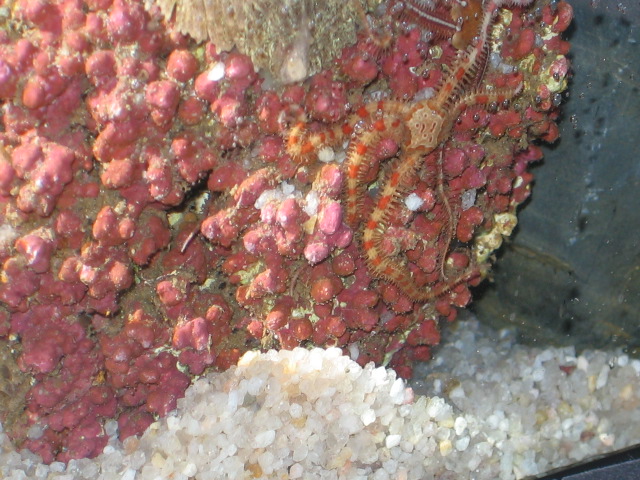 |
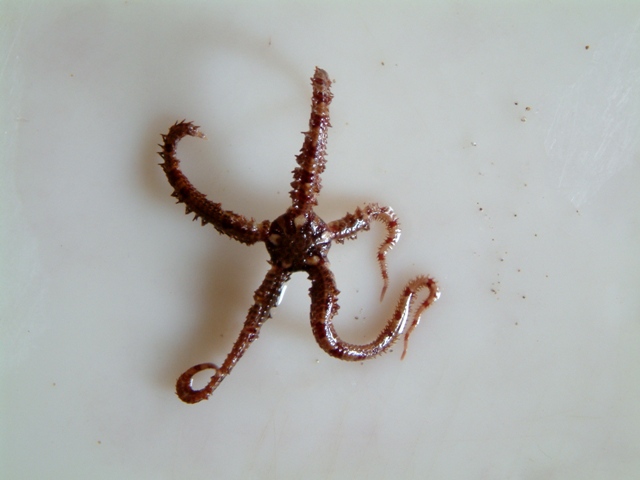 |
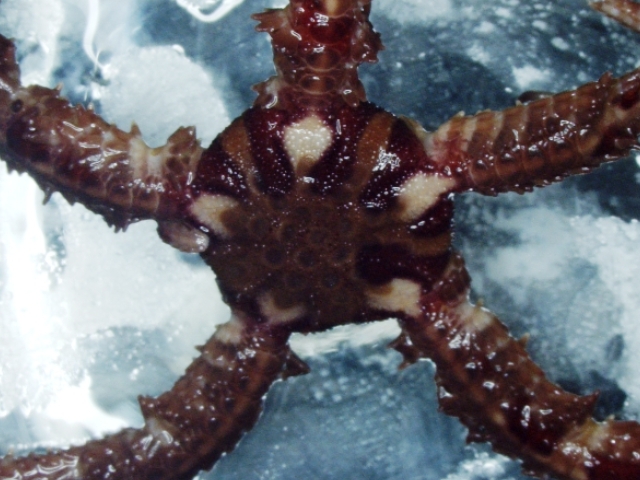 |
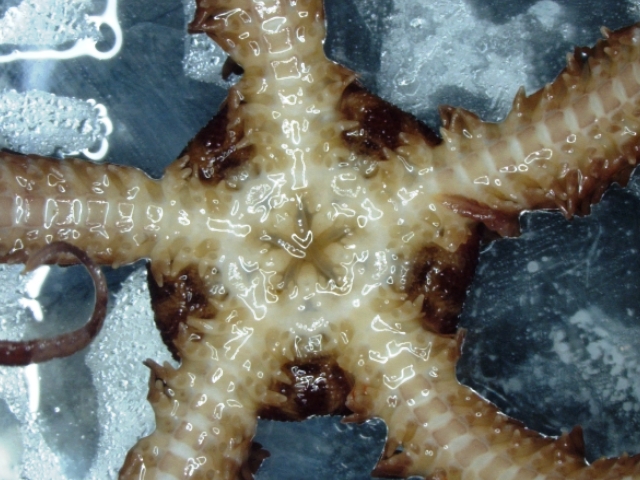 |
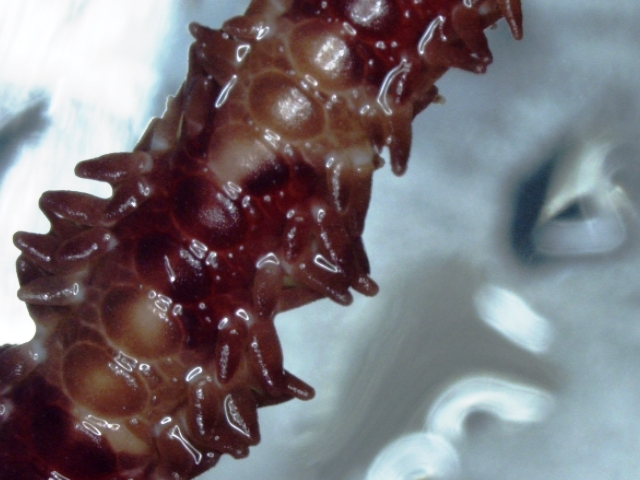 |
OSC Research
Mercier Lab - Research on reproduction, larval development, ecology and growth is carried out on a wide variety of marine invertebrates in this lab.